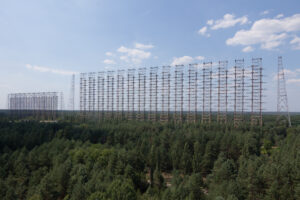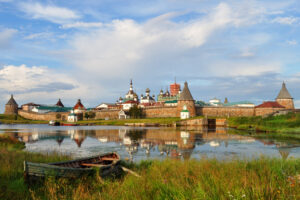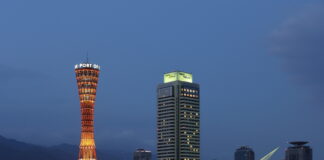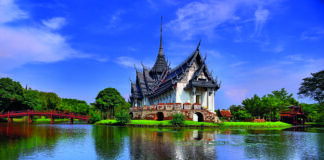- The Duga Radar (Chernobyl Exclusion Zone): Located near the Chernobyl Nuclear Power Plant, the Duga Radar was one of the Soviet Union's most secretive Cold War projects. It's an enormous over-the-horizon radar installation, also known as the "Russian Woodpecker," due to its tapping sound on radio frequencies. The official purpose was early detection of missile launches, but its vast scale and eerie presence amidst a nuclear wasteland make it an enigmatic landmark.

- Mount Yamantau (Southern Ural Mountains): Mount Yamantau is a peak that became the subject of international intrigue in the 1990s when the US accused Russia of building a vast underground complex. The purpose of this complex remains unclear, with speculations ranging from a nuclear military base, a repository for Russian treasures, or a bunker for the political elite in case of a nuclear war.
- City 40 (Ozersk): Ozersk, also known as City 40, is a closed city in Russia that was the birthplace of the Soviet nuclear weapons program. It didn't exist on maps for many years, and its residents were forbidden to contact the outside world. The city housed the Mayak plant, responsible for processing plutonium for the first Soviet atomic bombs. The secrecy surrounding the town, and its ties to nuclear production, make it a mysterious place.
- Kapustin Yar (Astrakhan Oblast): Kapustin Yar was the Soviet Union's most important rocket launch site, established in 1946. Often referred to as "Russia's Roswell," it is believed to have been a site for testing captured Nazi V-2 rockets and developing Soviet missile technology. There are also numerous UFO sightings and conspiracy theories associated with the area.
- Anomalous Zone of Molebka (Perm Region): The Molebka Anomalous Zone, often referred to as the "Perm Anomalous Zone," is an area in the Russian wilderness known for its strange phenomena, such as UFO sightings, strange lights, and unexplained changes in the behavior of electronic devices. Many consider it Russia's answer to the Bermuda Triangle.
- Kola Superdeep Borehole (Kola Peninsula): This is the site of the world's most bottomless artificial hole, drilled for scientific research. It descends over 7.5 miles into the Earth's crust. There are myths about the project – such as the researchers allegedly hearing "screams from hell" through the borehole, which add to its mystery.
- The Amber Room (Lost Location): Originally in the Catherine Palace of Tsarskoye Selo near St. Petersburg, the Amber Room was a world-famous chamber decorated with amber panels, gold leaf, and mirrors. The Nazis looted it during World War II and subsequently disappeared. Many believe that the Amber Room was hidden somewhere in Eastern Europe, and there are ongoing efforts to rediscover it.
- Mirny Diamond Mine (Siberia): Located in Eastern Siberia, the Mirny Diamond Mine was one of the Soviet Union's treasures and one of the world's most significant excavated holes. There are rumors and stories about the hole being so deep that it can suck in helicopters flying over it due to its gravitational pull.
- Solovetsky Islands (White Sea): The Solovetsky Islands, often referred to as Solovki, are located in the White Sea and are known for their beautiful monasteries. However, during the Soviet era, they housed one of the first Gulag labor camps. The contrast between the spiritual heritage and the brutal history of the islands adds a mysterious aura to them. The Solovetsky Monastery is now a UNESCO World Heritage site and is rumored to have hidden passages and crypts.

- Akademgorodok (Siberia): Founded in the 1950s, Akademgorodok is a town near Novosibirsk built to house scientists and researchers. At its peak, it was the home to over 65,000 scientists and their families. Many revolutionary scientific discoveries were made here, but it is also associated with various Cold War-era experiments and projects shrouded in secrecy.















